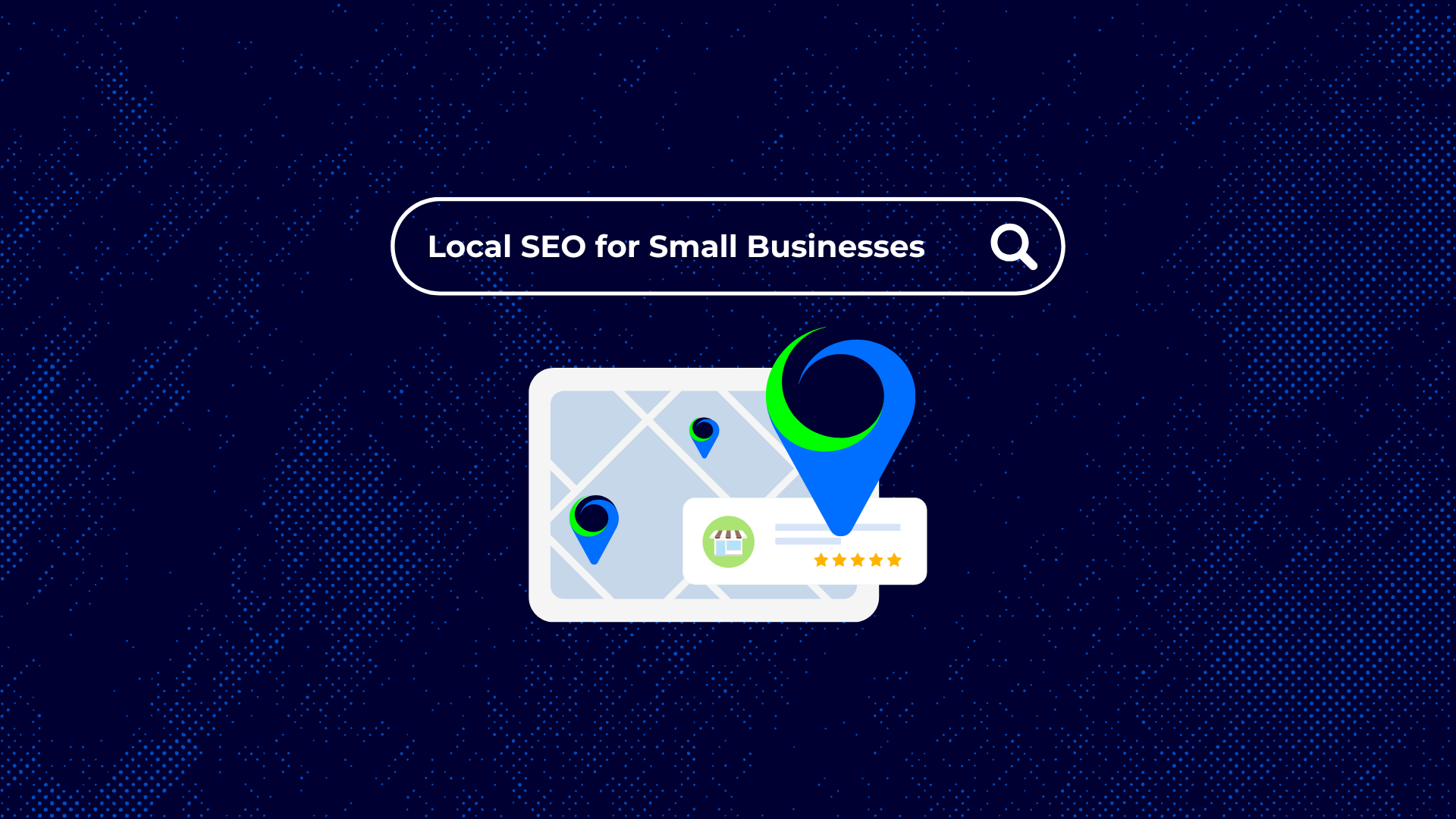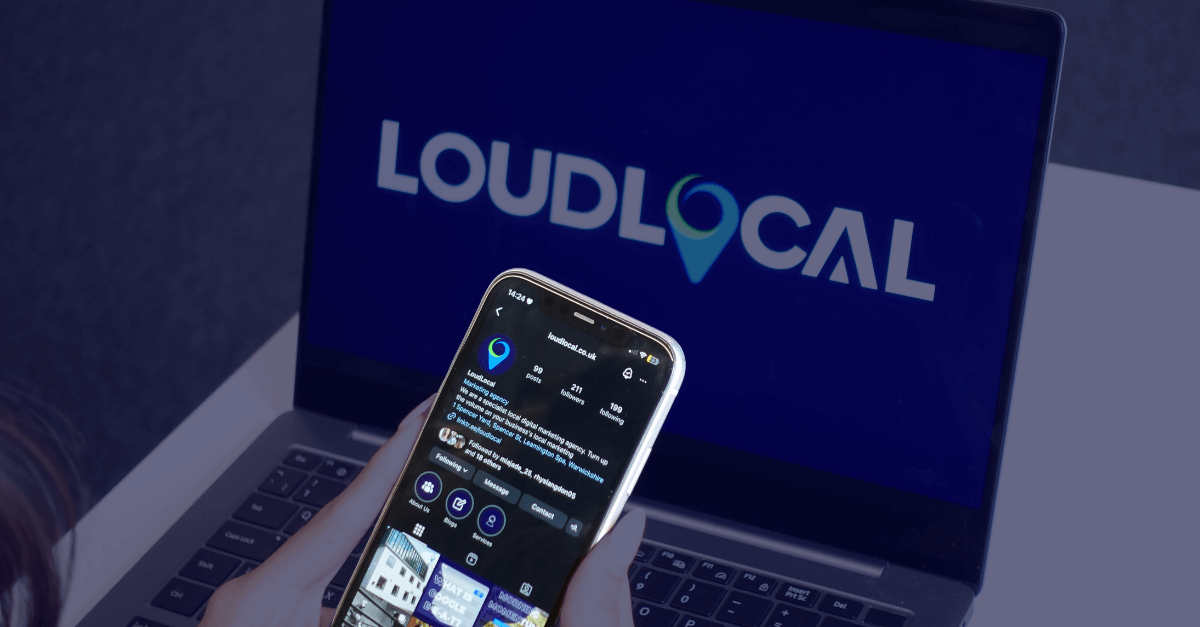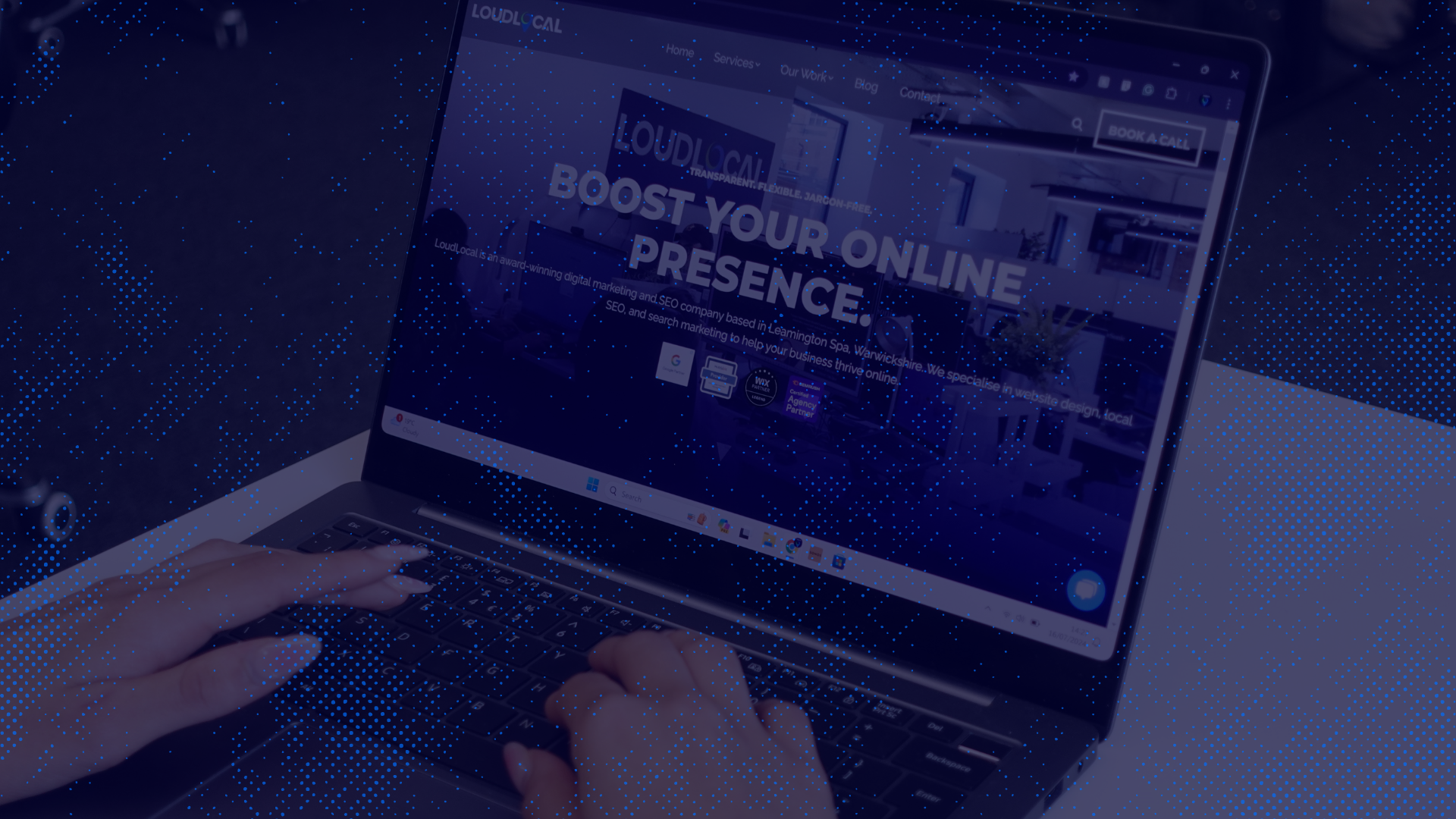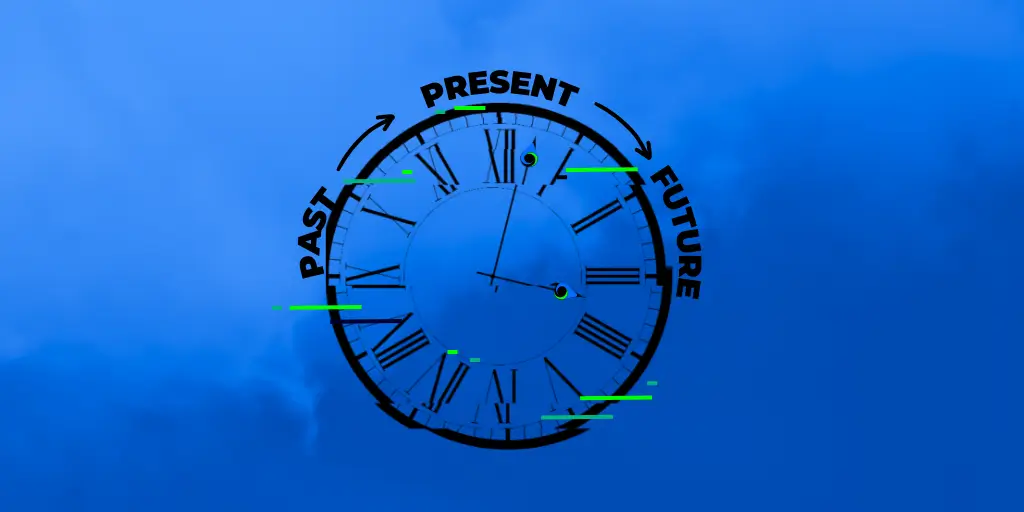The Ultimate Guide to Local SEO for Small Businesses (2025)
Getting found by local customers online isn’t some magic trick, it’s about making sure your business shows up when people nearby are searching for...
Got a question, or need help with something?
A member of the LoudLocal team is on hand to help you.
The Brickyard, Unit 2, Queen's Rd, Kenilworth, Warwickshire, CV8 1JQ
5 Merchant Square, Paddington, London, W2 1AY
In 2009, Google conducted an experiment in which forty-one unique shades of blue were tested on users browsing their search engine. The subject of their experiment was the link that appeared on the search results page (SERP). Nobody would blame you for thinking this was a relatively insignificant adjustment. After all, can such minor discrepancies in colour really lead to a measurable outcome?
After experimenting for over three years, Google concluded that a slightly purpler shade of blue received greater user engagement, resulting in over £200 million worth of advertising revenue. This experiment demonstrates the significance of Behavioural Psychology within Digital Marketing and how something so imperceivable can impact our subconscious decision-making.
%20(1).jpg?width=940&height=245&name=Google%20Shades%20of%20Blue%20(2)%20(1).jpg)
By understanding and leveraging user behaviour, Google's search link experiment led to over £200 million in advertising revenue.
In this article, we’ll take a closer look at the fundamental concepts of Behavioural Psychology and how it is leveraged in the world of marketing.
At its core, behavioural psychology is the study of human behaviour. It focuses on how different experiences influence the actions we take. By examining the relationship between the two, we can start to understand and, more importantly, predict how individuals learn and behave.
To give you an example, reciprocity is a key concept within Behavioural Psychology. It is defined by the tendency for people to return a favour when something is given to them. Imagine you own a streaming service looking to increase the number of new subscribers. By offering a free 30-day trial, users who enjoyed the service during the trial period may feel inclined to subscribe, as they feel they’ve already received value and want to reciprocate by becoming paying customers.
.png?width=940&height=245&name=Reciprocity%20(1).png)
ProBiz Solutions, a business consulting service, wanted to showcase their expertise. ProBiz offered a content-rich trial where users gained access to webinars, e-books, and personalised consultations. The trial not only converted users into paying clients but also expanded their network, increasing word-of-mouth referrals.
By applying core principles of behavioural psychology, marketers can tap into the subconscious mind of consumers. Understanding how users respond to stimuli allows brands to create more effective digital marketing strategies, driving higher conversion rates and greater user engagement. Let’s take a closer look at how these core principles are defined and utilised.
As mentioned previously, reciprocity is the obligation people feel to return a favour. This means when we receive something of value, we are more likely to give something back. In marketing, this is often objectified in the form of free content or trials that place the user in a subconscious state of debt, feeling as though they owe you something in return.
Scarcity is the psychological principle that suggests we place a higher value on something that is in limited supply. It’s that fear of missing out. Scarcity is used regularly in marketing, particularly in e-commerce. How often have you seen a website banner that reads ‘LIMITED TIME ONLY!’ or ‘DON’T MISS OUT!’ These are prime examples of how scarcity is used to portray a sense of urgency and encourage consumers to act fast.
%20(1).png?width=940&height=245&name=Scarcity%20(2)%20(1).png)
Research found 62% of people agree that Limited time offers encourage them to buy more often. In fact, 64% of consumers agree they buy Limited time offers on occasions when they might not have otherwise bought anything.
Anchoring plays to the tendency for us to rely heavily on the first piece of information we receive. This means that what we initially see often shapes our perception of an item's value. For example, in digital marketing, we always show the original price alongside discounted products to make it seem like an unmissable deal.
Social proof is the herd mentality in which we tend to follow the actions of others in an attempt to conform to what we perceive as correct behaviour. As a result, we often rely on collective opinions, particularly in unfamiliar scenarios. Social proof is prevalent in digital marketing through reviews, testimonials, influential advocates, and even the number of social media followers a brand has. To put it plainly, if we see that other customers are satisfied with something, then we are more likely to trust and purchase it ourselves.
.png?width=1920&height=500&name=Social%20Proof%20(1).png)
Around 92% of Business to Business (B2B) customers read online reviews and testimonials to make purchasing decisions. While 72% of customers say that positive reviews and testimonials strengthen their trust in a brand.
We really can’t help but place a higher value on things that we already own. The endowment effect focuses on the idea that consumers are more likely to pay for a product or service that they already feel invested in. For marketing strategists, this involves making a customer feel as though they own a product or service before they have fully committed, resulting in a desire to keep what they already have.
Loss aversion has similarities to the endowment effect. It is the idea that losing something outweighs the pleasure of gaining something of equal value. Essentially, we are more likely to avoid losses than acquire gains. In marketing, we can use this to trigger that fear of loss by highlighting the benefits the customer will lose if they do not convert.
Did you know, behavioural psychology plays a crucial role in how websites are designed? By understanding and predicting user behaviour, digital marketers are able to optimise the customer journey and build effective websites that drive increased user engagement, satisfaction and conversion rates. Below are just a few ways that behavioural triggers are integrated into UX design.
Colours have a huge impression on our feelings and behaviour. The impact of colour relates back to Google's link experiment at the beginning of this article. Different colours evoke distinct feelings that can influence our actions. Behavioural psychology enforces the decisions we make on colour schemes that align with the desired user response. For example, the colour red is often used to subconsciously induce urgency, leading to higher customer conversion rates on products and sales. On the other hand, the colour blue has been proven to amplify trust and usually leads to more service-based enquiries.
%20(1).png?width=940&height=392&name=Colour%20Psychology%20(2)%20(1).png)
Josef Albers once said "Colour deceives continuously" and "Every perception of colour is an illusion, we do not see them as they really are."
Cognitive ease refers to how easy it is for users to process information. Simple and Intuitive websites ensure that users experience less friction when interacting with the site. This concept can be applied by streamlining navigation and simplifying site structure. Put yourself in the shoes of your users. The journey from first interaction to conversion should be natural and seamless in order to achieve faster, more confident decisions from users.
Call-to-action (CTA) encourages users to take specific actions, like subscribing or purchasing a product. Behavioural psychology helps us understand how we can best design and position CTAs in order to appeal to users' motivations. By using action-orientated language, contrasting colours and strategic placement, we are able to increase the likelihood of a user converting. Optimal CTAs will often incorporate psychological concepts like scarcity to drive immediate action.
A/B testing or split testing is the experimentation of different variations in order to find and implement the best-performing variable. Behavioural psychology informs the design of these tests by highlighting which behavioural triggers, like colour, placement, or social proof, are most likely to influence users. A/B testing enables us to continually refine UX design based on user behaviour.
%20(1).png?width=1920&height=800&name=AB%20Testing%20(1)%20(1).png)
Microsoft Bing used A/B testing to adjust the display of their ad headlines. This experiment resulted in over £100 million in revenue over the course of a single year.
As digital marketers, we use personalisation to deliver customised content and experiences based on individual user behaviour, preferences and demographics. Psychology shows that we respond more positively to these personalised experiences as they feel more relevant and valuable. By understanding the data of our target audience, we can create environments that are more unique to them in order to improve user satisfaction and engagement.
Habit formation in UX design involves creating a cycle of routines and rewards that encourage users to regularly interact with a product or service. By examining data, we can create experiences that foster habitual behaviour in order to increase retention rates. Notifications and reward schemes can motivate users to return on a consistent basis.
While behavioural psychology offers powerful tools for influencing consumer behaviour, there should always be a balance between effectiveness and ethical considerations. Manipulating psychological triggers like scarcity, social proof, or loss aversion can easily cross the line into exploitation if not used responsibly. Ensure that strategies are transparent, non-deceptive, and focus on genuinely enhancing user experience. Misleading tactics, such as false scarcity or exaggerated claims, may lead to short-term gains but can damage trust and brand reputation in the long run. We should all aim to build meaningful, value-driven relationships with consumers by using behavioural psychology to serve their needs, not just drive conversions. Maintaining this balance ensures both business success and consumer trust in order to foster long-term loyalty.
In summary, behavioural psychology, when used strategically, helps us as digital marketers to create more effective and personalised experiences. It enables us to take full advantage of user data in order to drive more engagement, sales and overall customer satisfaction.
If you enjoyed this article, then why not check out some of our other blog posts? Alternatively, if you're interested in receiving support for website design, search engine optimisation (SEO), or other marketing services, please feel free to get in touch.

Getting found by local customers online isn’t some magic trick, it’s about making sure your business shows up when people nearby are searching for...

Running a small business is a full-time job in itself, and finding time for social media can feel like an extra task on the list. But here’s the...

Running a trades business takes a lot of time and energy. You’re busy on site, chasing quotes, and keeping customers happy. But while you’re focused...

Guide Contents What is Digital Marketing and why is it important?
First Things First - What is Bounce Rate? Bounce rate is a commonly used metric to determine whether your site "holds up" so to speak. When a user...
1 min read
Why Local Search Engine Optimisation (SEO) is Important If you are a small or local business, reaching people in your local area is vital for...